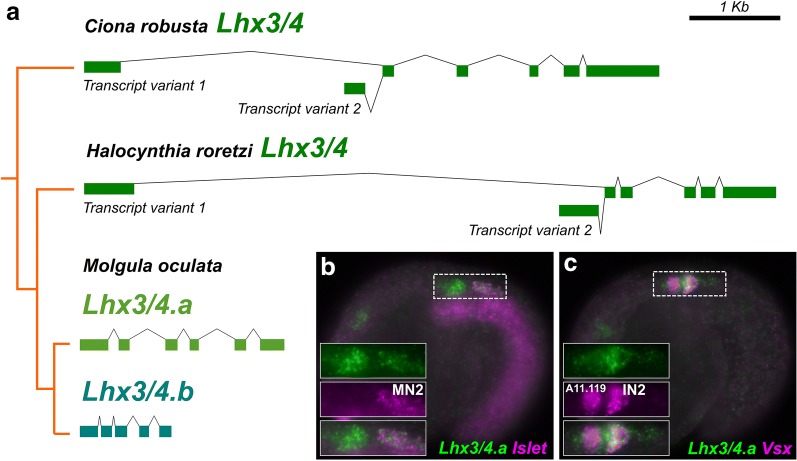Fig. 5.
Molgula-specific duplication and subfunctionalization of Lhx3/4. a Diagram depicting Lhx3/4 genes in the genomes of Ciona robusta, Halocynthia roretzi, and Molgula oculata, with their phylogenetic relationships indicated by the orange tree. All diagrams are at the same scale (scale bar is at top right). Exons indicated as colored bars, introns are depicted by crooked lines. Both Ciona and Halocynthia have a single Lhx3/4 gene that is transcribed from two distinct promoters to give rise to two transcript variants. In both species, variant 2 is involved in vegetal pole patterning in the early embryo, while variant 1 is involved in motor ganglion patterning. In all three Molgula species sequenced, Lhx3/4 has been duplicated, giving rise to paralogs Lhx3/4.a and Lhx3/4.b. Loci from M. oculata are shown here (instead of M. occidentalis) because its genome is the least fragmented Molgula genome. M. occidentalis Lhx3/4 genes are similar in structure to their M. oculata orthologs, but assembly errors near the 3’ end of M. occidentalis Lhx3/4.b (not shown) prevented us from using sequences from this species in our diagram. b Two-color fluorescent in situ hybridization for Lhx3/4.a (green) and Islet (magenta) showing co-expression in MN2. c Two-color fluorescent in situ hybridization for Lhx3/4.a (green) and Vsx (magenta) showing strong co-expression in IN2, and diffuse Lhx3/4.a expression throughout the MG

